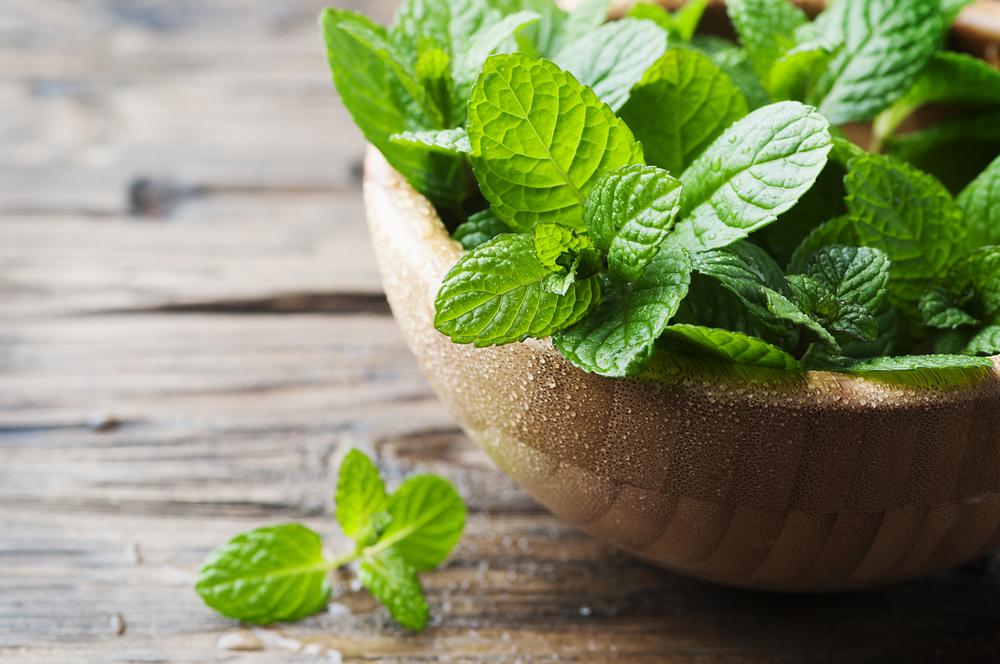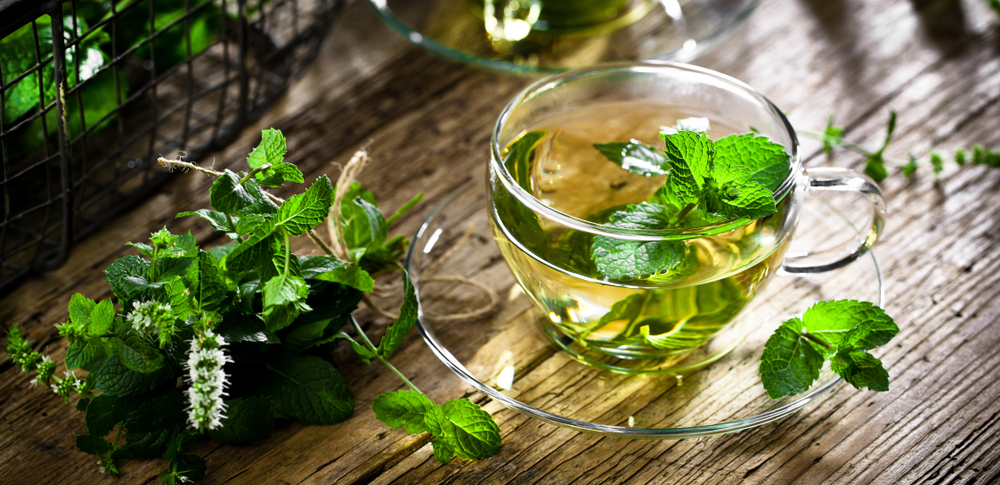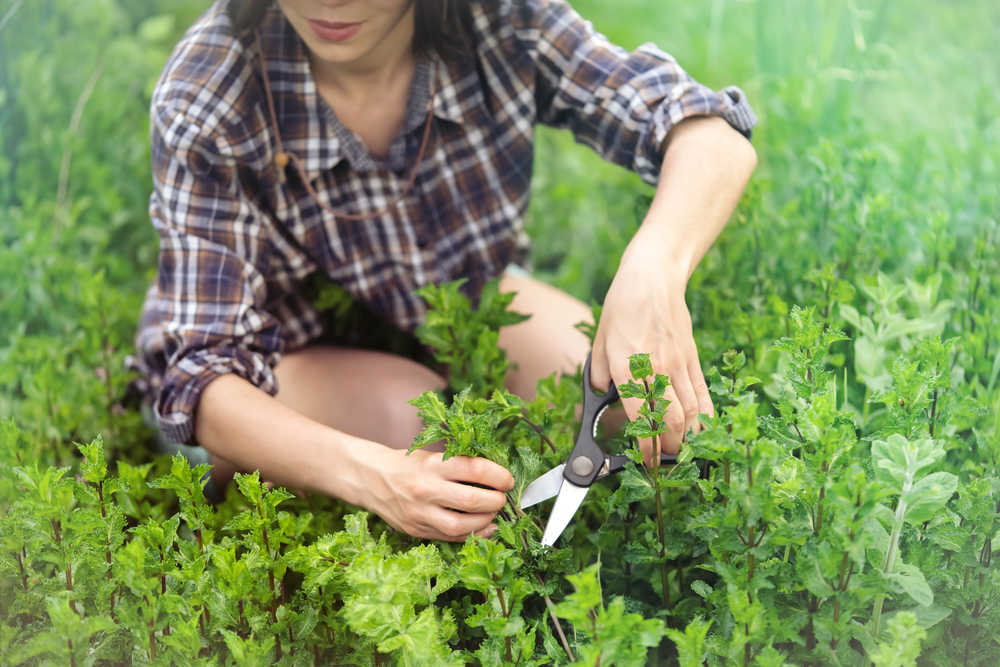Is mint a staple in YOUR household?… It should be!
We all know that mint is intensely aromatic and pleasantly intoxicating, with soothing menthol flavors which have both culinary and medicinal properties. Furthermore, it’s a perennial herb that’s unbelievably easy to grow.
Yet, a massive problem with this herb is that it’s famous for escaping the garden boundaries to search for more space to expand its horizons. Actually, it can spread 4 inches a month or sometimes even more!
Even though this might not sound like that much, the more it grows its roots in a specific area, the faster it’ll grow and sprawl out as new plants get created in the process. This leaves you wondering if growing this plant is worth the hassle.
Well, we’re here to tell you: it is! For one, why wouldn’t you want a fragrant patch of mint in your garden? And also, you can plant them in containers because there are ways to limit their unlimited growth.
In its abundance, you’re sure to find your own reasons for letting this herb thrive in your garden, whether you grow it for fresh mint lemonade or ice cream or to attract more pollinating insects to your garden.
So to put your mind at ease, we’ll cover the benefits, plus the best growing conditions.
Keep reading to find out more!

How Many Varieties Of Mint ARE There?
You wouldn’t have guessed, but there are ACTUALLY over 600 varieties of garden mint you can choose from. It’s pretty difficult to stick to growing just one type. While some of them can be used together, lots of them are known for their specific flavors.
You’ll need to explore them on your own in order to discover which ones you like best. But the most common garden mints you’ll find are:
- Peppermint
- Spearmint
- Horsemint
- Lavender mint
- Chocolate mint
- Apple mint
- Pineapple mint
- Watermint
- Ginger mint
- Strawberry mint
- Catmint
- Pennyroyal
- Corsican mint
- Egyptian mint
We recommend you explore what grows wild in your area as well, provided you know how to identify the herb. For example, the flavors of wild foraged mints may be milder and more suitable for adding to your herbal tea.
You’ll be delighted to find out that this plant is also a beautiful perennial to have in your garden. It grows some lovely little flowers at its tips, and you can easily harvest it yearly with dependable results.
Now let’s talk about what this magical herb can do for you!
Great For Digestion
This herb is perfect for aiding you if you have indigestion. The leaves are chock full of antioxidants and phytonutrients that do wonders for your stomach. Even the smell of this herb alone can help activate the salivary glands that produce digestive enzymes.
These are the enzymes that are vital to digestion. The leaves of this plant will relax your stomach muscles, reducing the chance of you getting stomach spasms or indigestion. So I guess this means you can kiss all those pills goodbye. It’s a win-win situation!
Fatigue
How often do you feel tired mid-day, and you run for the coffee? Well, not anymore! A whiff of this herb might just be all you need to get your brain going again because this herb is a natural stimulant.
Smelling it also helps you feel a lot less stressed and depressed because it relaxes your body and soothes your mind. The aroma the herb releases has an effect on the amount of serotonin that goes to your brain.
So, the next time your mood needs a boost, just draw yourself a warm bath and sprinkle some fresh mint leaves into the water. You’ll instantly feel more relaxed!

It Attracts Bees And A Few Other Garden Pollinators
We have all come to understand the importance of bees in our world. And this fantastic herb attracts honey bees, bumble bees, native bees, and an entire suit of some other lovely winged creatures.
While most breeds of this plant have been brought to our country for the purpose of commercialization, one native species thrives in the wild. If you can manage to reintroduce it in your garden, the bees will love you for it.
It goes by a few names. Mainly field mint, wild mint, or corn mint, and its Latin name is Mentha arvensis. If you’ve ever tasted the honey that’s being produced near mint farms or valleys covered in this greenery, you will definitely know its value.
Decongestant
You may have already heard about this one, but let’s break it down. The pungent smell of this wonderful herb can also clear up your throat, nose, and lungs when you’re feeling congested.
If you happen to be coughing a lot, the relaxing smell is excellent for unclogging the nose, throat, and the rest of your respiratory channels.
This herb also has many anti-inflammatory and anti-bacterial properties that will help relieve any inflammation along your respiratory tract. Have a cold or flu? Make yourself a cup of mint tea! It’s perfect for helping you clear up all that congestion.
Skin Care
We bet you didn’t know about this gem! Not only can this miracle herb help with any medical issues you may have, but it’s also great for clearing up those annoying pimples. It soothes itchy skin and repels any pesky bugs you might have around.
You can use it as an amazing treatment for bug bites and stings from mosquitoes, wasps, gnats, hornets, and…yes, bees as well. The powerful scent also helps keep other bugs away from you too. The leaves are full of antioxidants that help give your skin a natural glow.
And the anti-inflammatory and anti-bacterial properties found in it also help clear up acne. Isn’t that amazing?
So now that we’ve covered a few benefits, let’s talk about the growing process.

How Do You Grow Mint?
Fortunately, mint happens to be one of the easiest herbs you can grow. They grow on an interesting root system called runners because they sprout new leaves and plants along their roots as they begin to grow.
Even though these plants can spread quickly, keeping them in a container away from other plants will help tame them. To grow this herb, all you need is a water-retaining container 12 to 16 inches wide, some potting soil, and, obviously, the plant.
You can grow it by cutting a twig off of an existing plant, or you can buy a seedling or plant from your local nursery. We recommend these kitchen scissors to help you out. Either way is acceptable, but growing this herb from seed can be a bit difficult.
Place your potted mint plant somewhere where it’ll get plenty of sunlight, preferably in your kitchen, where you can easily access it when you need it. You’ll need to keep the soil damp, so make sure you water it often and keep it away from any warm elements.
When trimming your plant, cutting from the top is essential to allow it to grow more leaves on its sides. This will help you get more leaves out of your plant. Another thing to keep in mind is to trim the plant’s flower buds to keep it under control.
Once you start the harvesting process, never take more than a third of the leaves so it doesn’t run out. When drying them out for tea, hang them somewhere upside from the stems, or you can lay them flat on a tray.
Once the stems and leaves have become brittle, you can store the leaves in an airtight container in your pantry.
So, just as long as you take care of your patch by harvesting regularly and containing the sprawling roots, you can enjoy this beautiful and yummy herb for years to come!
And if you’re interested in reading about some more great tips, check out: Top 9 Alkaline Foods You Should Be Eating Daily








